- Register
- Log in to Tune-In
- Wishlist (0)
-
Shopping cart
(0)
You have no items in your shopping cart.
Beatles News
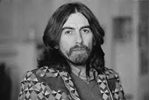
George Harrison did write several great songs for The Beatles, but “Something” was the most successful track he wrote for the band. Many listeners were awed by Harrison’s sweeping love ballad, and many musicians were impressed by Harrison’s work. The track has been covered hundreds of times, and Harrison once named his favorite cover of his Beatles hit.
Harrison didn’t contribute the same number of songs for The Beatles as Paul McCartney and John Lennon did, but he did have a few great tracks, such as “Here Comes the Sun” and “While My Guitar Gently Weeps”. However, “Something” is the biggest hit he wrote for The Beatles. Released as a double A-side single with “Come Together”, “Something” topped the U.S. Billboard Hot 100 in 1969.
It was also included on Abbey Road, a massive chart success. Many other musicians loved the song and decided to record their own versions. Artists who covered it include Frank Sinatra, Ray Charles, James Brown, Smokey Robinson, and Elvis Presley. Sinatra once declared it as “the greatest love song of the past 50 years.”
Source: Ross Tanenbaum/cheatsheet.com

The Beatles experimented with many different styles of music. “Yer Blues” was the band’s attempt at an American blues song, while songs like “You’ve Got to Hide Your Love Away” saw the band capturing a more folkish sound. One Beatles song Paul McCartney said he and John Lennon wrote in a “waltz time.”
While many songs by The Beatles are credited to the Lennon-McCartney duo, the pair stopped collaborating as often in the band’s later years. The band started writing together on their earliest hits, like “I Saw Her Standing There” and “I Want to Hold Your Hand.” However, by 1964, the two were starting to work more independently.
“Baby’s in Black” is a song from 1964’s Beatles for Sale. It’s one of the last songs McCartney and Lennon worked on together. In Many Years From Now, McCartney told Barry Miles that the song was a collaborative effort between the two bandmates.
Source: Ross Tanenbaum/cheatsheet.com
details
Paul McCartney and George Harrison were the two youngest Beatles, and they formed a friendship before they were in a band together. By the time The Beatles broke up, their relationship had disintegrated. Harrison was tired of the way both McCartney and John Lennon treated him, but he reserved most of his ire for McCartney. This was because McCartney viewed Harrison as his younger brother.
McCartney and Harrison met on the bus to school. They were a year apart, but they bonded over their love of music.
“I knew George from the bus,” McCartney said, per The Beatles Anthology. “Before I went to live in Allerton, I lived in Speke. We lived on an estate which they used to call the Trading Estate. (I understand now that they were trying to move industry there to provide jobs, but then we didn’t ever consider why it was called a trading estate.) George was a bus stop away. I would get on the bus for school and he would get on the stop after.”
Source: Emma McKee/cheatsheet.com
details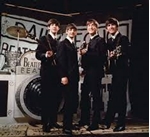
Most of The Beatles’ hits came out in the 1960s. The group had a few hits in the 1970s, including the earlier song “Got to Get You Into My Life.” The band had one big hit in the 1980s and two big hits in the 1990s.
The Beatles released hits in the 1960s, the 1970s, the 1980s, and the 1990s. Some of those songs were hits during their initial run as a band. On the other hand, some Beatles songs were hits after the group disbanded.The Beatles were together from 1960 to 1970. Thus, the 1960s were undeniably their heydey as a group. During that decade, they released hits of every flavor. Their first No. 1 hit on the Billboard Hot 100 was “I Want to Hold Your Hand.”
Subsequently, they had 17 more No. 1 singles on the chart in the 1960s, the final one being “Come Together”/”Something.” Notably, Billboard counted those two songs as one single. In addition, many of their other songs became hits without reaching No. 1, including “Yellow Submarine,” “Day Tripper,” and “Strawberry Fields Forever.”
Source: Matthew Trzcinski/cheatsheet.com

On May 8, 1970, The Beatles released their iconic album Let It Be. To mark the occasion, we're revisiting Pat Carty's deep-dive into the album, following the release of the 2021 Super Deluxe Edition...Is there such a thing as a runt in The Beatles’ litter? A ridiculous notion really when we’re talking about perhaps the most perfect discography in music but I do remember a journalist – a noble breed against whom I won’t countenance an ill word – saying something along the lines of how Let It Be was often the first Beatles record people bought – because of the cover – and it’s the worst one. Spitting out this class of rot – that it’s the “worst one” – is a bit like grumbling about a Himalayan peak that isn’t quite as tall as the others; it’s still pretty impressive, it’s still The Beatles.
Source: Pat Carty/hotpress.com
details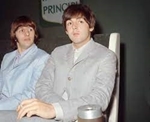
Paul McCartney said he avoided solos after his first performance with John Lennon, and Ringo Starr avoided them for his entire time with The Beatles. Lengthy instrumental solos aren’t necessarily a fundamental part of The Beatles’ sound, perhaps because half the members didn’t like them. The reasons they wanted to avoid solos were different, though.
When McCartney joined Lennon’s band, the Quarry Men, he had a chance to play a guitar solo during his first-ever performance with the band. He nailed the part during rehearsals but couldn’t get through it onstage.
“For my first gig, I was given a guitar solo on ‘Guitar Boogie,'” McCartney said, per The Beatles Anthology. “I could play it easily in rehearsal, so they elected that I should do it as my solo. Things were going fine, but when the moment came in the performance, I got sticky fingers; I thought, ‘What am I doing here?’ I was just too frightened; it was too big a moment with everyone looking at the guitar player. I couldn’t do it. (I never played a solo again until a few years ago). That’s why George was brought in.”
Source: Emma McKee/cheatsheet.com

When the Beatles officially broke up in 1970, John Lennon, Paul McCartney, George Harrison, and Ringo Starr were changed for good. They’d all been part of the most famous band in the world. Now what? Lennon had creative plans with Yoko Ono. But what about the rest of the fab four? McCartney once admitted that he felt lost after the band parted ways. He wasn’t sure if he wanted to continue with music at all.
In March 2023, McCartney answered a question on his website from a fan about the biggest risk he’s taken in his career. One of the biggest risks McCartney took, he answered, was continuing on with music after The Beatles.
“The main question I had was whether to keep going after The Beatles,” he wrote, “because it was a hard act — some might say, an impossible act — to follow.”
The combination of Lennon, McCartney, Harrison, and Starr was like catching lightning in a bottle. Together, they were something astoundingly special. There’s no way the next project could produce that kind of magic.
Source: Kelsey Goeres/cheatsheet.com
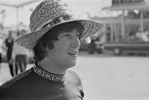
“Help!” is one of the biggest hits John Lennon wrote for The Beatles. However, the lyrics have more meaning than many may have realized. The track expressed many of Lennon’s insecurities, and he even admitted to being “insecure” while writing the track.
In 1965, Beatlemania was at its peak. The band was benefitting from unprecedented success. However, Lennon wasn’t overjoyed as the success overwhelmed him and caused him to experience intense pressure and stress. In an interview with Playboy in 1980. Lennon said the insecurity he felt over The Beatles’ success manifested itself in “Help!”, which he wrote in his “fat, Elvis period.”
“When ‘Help!’ came out, I was actually crying out for help,” Lennon shared. “Most people think it’s just a fast rock ‘n’ roll song. I didn’t realize it at the time; I just wrote the song because I was commissioned to write it for the movie. But later, I knew I really was crying out for help. So it was my fat Elvis period.”
Source: Ross Tanenbaum/cheatsheet.com
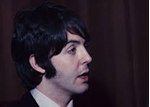
Paul McCartney makes the shortlist for the most successful songwriter ever. Between the chart-topping tunes he wrote with The Beatles and his successful solo songs, he’s reached the apex dozens of times in his career. Still, one Paul song turned into a total flop when another artist recorded it while the Fab Four were at their peak.
English jazz musician Chris Barber found himself in an enviable position in July 1967. Paul McCartney had a song to give away and wanted to hand it to Barber. It was an offer he couldn’t refuse. Barber took Macca’s “Catswalk” tune, which he wrote nearly a decade earlier, rechristened it “Catcall,” and recorded a pop-jazz take on the song.
It was one of the rare Paul songs that flopped completely when the single hit shelves in October 1967.
Barber scored several hits in England, but “Catcall” wasn’t one of them. He had three top-10 tunes and another two top-50 songs, per Official Charts Company. One might think having McCartney’s name attached would create a ripple effect of success. That wasn’t the case. In an era where nearly every song Paul and the Beatles performed found instant acclaim, “Catcall details

Aside from writing a majority of the entire Beatles catalog, in their earliest days as songwriters, John Lennon and Paul McCartney also wrote and produced songs for other artists.
Their songs, some of which were written by the duo in the late 1950s, were also recorded by The Beatles later on. Lennon-McCartney was credited with The Rolling Stones‘ 1963 hit “I Wanna Be Your Man,” along with several tracks for groups like The Fourmost, Billy J. Kramer with The Dakotas, and pop due Peter and Gordon.
Lennon-McCartney also offered songs —many of which became hits— to singer and fellow Liverpool friend Cilla Black, along with Mary Hopkin (also produced by McCartney) and her No. 2 single “Goodbye,” The Strangers with Mike Shannon (“One and One is Two”), singer P.J. Proby (“That Means a Lot”), The Applejacks (“Like Dreamers Do”), among other acts.
In addition to the initial American Songwriter list of 6 Songs You Didn’t Know Lennon and McCartney Wrote for Other Artists in 2022, here’s a look at five more songs by other artists that are credited to Lennon-McCartney.
Source: Tina Benitez-Eves/americansongwriter.c details

On Monday, July 6, 1964, Shaftesbury Avenue in London's West End was a scene of pandemonium the likes of which London hadn't witnessed since the day the Second World War ended. On this hot summer night, an invasion that had been percolating in the north of England for years finally came to a full boil. The Beatles' debut film was having its world premiere at the London Pavilion, replacing Tom Jones, the film that heralded the critical and even more importantly commercial arrival of the new British cinema explosion.
The Beatles — John Lennon, Paul McCartney, George Harrison and Ringo Starr — had burst onto the international pop music scene. Only a few short years ago, they were scruffy young lads from Liverpool, the industrial port city of the north of England, in love with rock 'n' roll, with faint dreams of stardom. The current lineup began with John Lennon asking Paul McCartney to join his group the Quarrymen, McCartney bringing in Harrison, with Lennon's art-school friend Stuart Sutcliffe joining and Pete Best settling in as their drummer, after many held that position in the group. Sutcliffe eventually dropped out to stay in Hamburg and pursue a career in art. When the group finally signed to Parlophone details
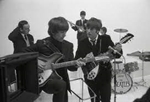
All of The Beatles processed John Lennon’s death in different ways. Paul McCartney had a tough time discussing it and initially called it a “drag,” while Ringo Starr left his trip in the Bahamas to fly to New York to be with Yoko Ono. The news crushed George Harrison, but instead of grieving in silence, the former Beatledecided to record music.
John Lennon was fatally shot outside his New York City apartment on Dec. 8, 1980. The news stunned the world as many networks and broadcasts stopped what they were doing to announce his death. Harrison was set to record music for his upcoming album, Somewhere in England.
When he heard the news, many believed he would postpone the session to another day. However, drummer Dave Mattacks said Harrison wanted to go through with the session as recording a song would be “therapeutic.”
“Ray [Cooper] called on the morning of the sessions and said, ‘I’m not sure whether it’s going to happen,’” Mattacks told Uncut magazine. “I asked why. ‘Have you not heard? John Lennon has been shot.’ There was a two- or three-hour gap when nothing happened, then Ray called back and the conversation was some details
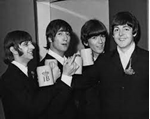
During the 1960s, music fans would always anticipate the latest single from The Beatles, who were taking the music industry by storm. The single’s A-side was almost guaranteed to be a hit, with the B-side usually landing with mixed results. However, Paul McCartney said The Beatles always tried to deliver excellent B-sides, even if they flopped.
The Beatles had many excellent A-side singles like “Hey Jude” and “Can’t Buy Me Love” that dominated the charts in the 1960s and are still widely listened to today. However, there are a few deep-cut B-sides that many people, including The Beatles themselves, believe are better than the A-side they were on. A few examples of these include “I Saw Her Standing There”, “I Am the Walrus”, and “Rain”.
“Rain” was released as the B-side to “Paperback Writer”. “Paperback Writer” was a No. 1 single, but The Beatles thought “Rain” was the better song. In the book The Beatles: Off the Record, Ringo Starr said “Rain” is one of his favorite Beatles songs and said it’s the best piece of drumming he did with the band.
Source: Ross Tanenbaum/che details
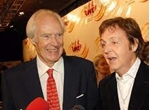
Paul McCartney helped create one of The Beatles’ best songs with “A Day in the Life.” That makes it one of the most iconic songs of its generation. The Sgt. Pepper’s Lonely Hearts Club Band finale stands as the greatest John Lennon-Paul McCartney song. Paul had a crazy thought to record an entire orchestra for the piece’s crescendo, but producer George Martin stepped up with a genius idea and made the climax even better.
“A Day in the Life” was essentially two songs — John’s disturbing opening vignette with Paul’s slice-of-life narrative attached after it. Macca’s crazy plan was to have an entire symphony orchestra play the swelling buzz of sound that married the two halves and reappeared at the end of the song.
Even crazier, Paul wanted to conduct the orchestra — 80 musicians or more — and have them play by feel instead of following sheet music. Both parts of that plan never really got off the ground, but Martin had a genius plan to save Paul’s crazy idea, writes Paul McCartney: A Life author Peter Ames Carlin:
Source: Jason Rossi/cheatsheet.com

John Lennon was a fan of a Bruce Springsteen song and a Cars song for the same reason. He liked 1980s music with 1950s vibes as well as classic rock songs from the 1950s. The Springsteen song was huge in the United States but not the United Kingdom.
John Lennon was a big fan of one of Bruce Springsteen’s songs. He said it reminded him of 1950s music. In addition, John felt the Springsteen track was similar to one of his biggest solo hits.
The book Lennon on Lennon: Conversations with John Lennon includes an interview from 1980. In it, John compared some recent singles to his song “(Just Like) Starting Over.” For context, “(Just Like) Starting Over” is deeply indebted to the music of Elvis Presley and other early rock ‘n’ roll stars.
“Bruce Springsteen’s ‘Hungry Heart’ — which I think is a great record — is to me the same kind of period sound as ‘Starting Over,'” John said. “I think The Cars’ ‘Touch and Go’ is right out of the ’50s. ‘Uh, uh, oh … ‘ That new wave, a lot of it is ’50s stuff. But with the ’80s styling, and that’s what I think &lsqu details
